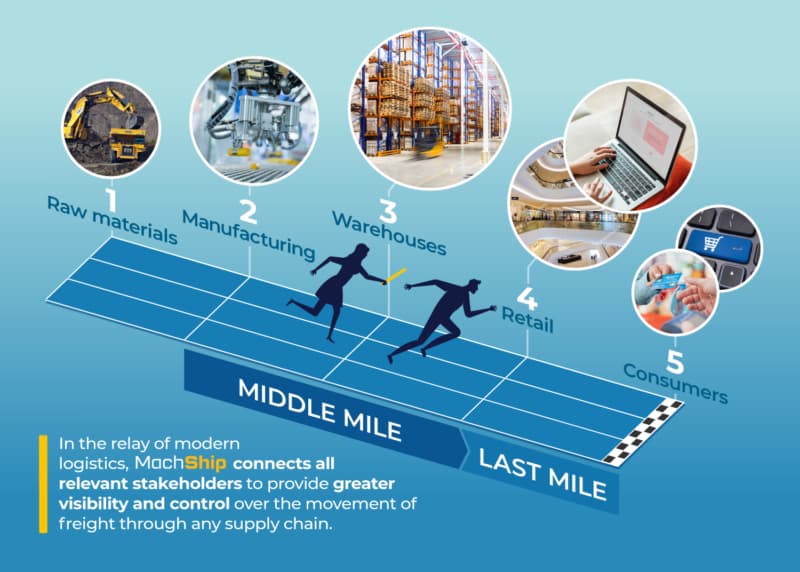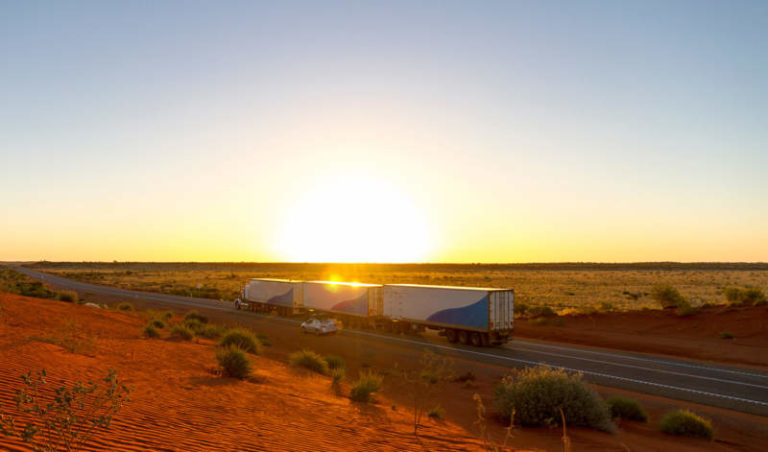Economies around the world have grown meteorically from global trade in the last 100 years.
Australia’s, in particular, owes plenty to its logistics industry.
Constantly-evolving freight networks have made Australia one of the most prosperous countries in the world – facilitating exports from our core industries that fuel our world-leading GDP, and bringing high-quality, low-cost import goods to retail to keep living costs down for Australian consumers.
The efficiency and safety of our supply chains, which underpin Australia’s national economic competitiveness, are the result of decades of innovative collaboration between freight operators and governments.
This innovation reduces production costs…
Lower production costs create jobs and enable economic growth…
And economic growth upholds the competitiveness of Australian exports in both global and domestic markets.
Long-term investment in critical logistics infrastructure, freight planning and efficient regulatory frameworks have made logistics the backbone of the Australian economy. Today, the Australian Logistics Council reports that logistics accounts for 8.6% of Australia’s GDP, 1.2 million jobs for Australians and a $130 billion annual injection to the national economy.
So thriving is our economy that, according to Infrastructure Partnership Australia’s 2017 report, many of Australia’s core supply chains are operating at capacity. Population growth and gradual increases in freight task have seen trade routes congested due to inadequate infrastructure, putting existing freight corridors under pressure. Freight operators are feeling the heat as they struggle to run on-schedule, while Australian consumers absorb the financial cost of goods transportation delays at the checkout.
Failure to meet the current freight task efficiently is one thing, but failure to grow and innovate alongside it represents a serious threat to Australia’s economy – and the economic opportunities enjoyed by Australians.
Let’s look at how much logistics have evolved already.
The evolution of Australian logistics
In decades gone by, it took weeks just to receive a letter, and retailers waited months to complete large freight tasks. There was no such thing as supply chain visibility – indeed, no digitised data that would enable it – and information was not shared between operators at disparate parts of the freight journey. Any number of things could halt your goods on their journey from raw materials to retail – often due to miscommunication in the complex networks of disparate entities through which your goods must travel – and there would be little you could do about it.
Today, we work as a team.
Freight operators plan and execute the smooth transport of goods through the different pitstops of the middle mile, passing the baton from raw material producers to manufacturers, and from manufacturers to retailers, ensuring a smooth handover to the last mile operators. Everything we consume – from spaghetti and smartphones to the bricks and mortar of the homes we live in – has been this baton, passed carefully through many hands across the supply chain.
The seamless journey that is today’s supply chain is the result of decades of engineering, operations management and technological innovation. Indeed, the capability is there – but there is still a long way to go.

What’s holding the Australian logistics sector back?
With the National Transport Commission projecting that Australia’s freight task will grow by 26% in the next decade in its 2016 Who Moves What Where report, the time to invest in the safety and efficiency of Australian supply chains – and therefore Australia’s sustainable economic growth – is now.
To illustrate the crucial importance of a thriving freight network, let’s look at an example from overseas.
The importance of a thriving freight sector
As we watch Britain grapple with the blows to its trade-reliant economy arising from its impending exit from the European Union, the importance of international trade becomes apparent.
Not only does Britain stand to lose its entire regulatory framework for its exports, but its citizens face years of higher prices for household goods: Fruit and vegetables from Spain, leather shoes from Germany and wine and cheeses from France, all imported from Europe via the continent’s world-class road, rail and sea trade infrastructure.
With a fraction of the agricultural capacity required to feed, clothe and shelter its growing population on home turf, Britain lacks both the produce and the freight infrastructure to survive without lucrative networks of trade partners overseas.
It has never been clearer that cheap and efficient logistics networks directly impact the everyday consumer, buoying up standards of living by driving the cost of everyday goods down. To keep this vital industry improving Australian lives, the government must prioritise investment in critical logistics infrastructure to stay competitive in a global marketplace.
Australia’s freight future
We know that freight trade is an economic imperative for Australian industries – that mining, agriculture, manufacturing, construction and retail industries would collapse without it. The economic value is clear: Our economy could save $1.5 billion in transport and logistics costs per every 1% increase in supply chain efficiency, which in turn could fuel significant economic growth.
But it’s not just the economy that suffers without a strong supply chain. Our lives would be affected too. The standard of living we’ve grown accustomed to depends on the smooth passing of the freight baton through the supply chain.
Australia’s economic future is one where high-quality, low-cost goods continue to reach the shelves of our stores, pave new roads that connect communities, and create new technologies that improve our work and our lives. The backbone of that future is safe, efficient and sustainable supply chains and a thriving freight industry.
Refs
- Infrastructure Partnerships Australia – INITIAL SUBMISSION ON PRIORITIES FOR THE INQUIRY INTO NATIONAL FREIGHT AND SUPPLY CHAINS – https://infrastructure.gov.au/transport/freight/freight-supply-chain-submissions/Infrastructure_Partnerships_Australia.pdf
- ALC report – http://www.austlogistics.com.au/wp-content/uploads/2018/10/ALC-OVERVIEW-October-2018-WEB-1.pdf
- Mercatus – Free trade myths vs reality – https://www.mercatus.org/publication/benefits-free-trade-addressing-key-myths

